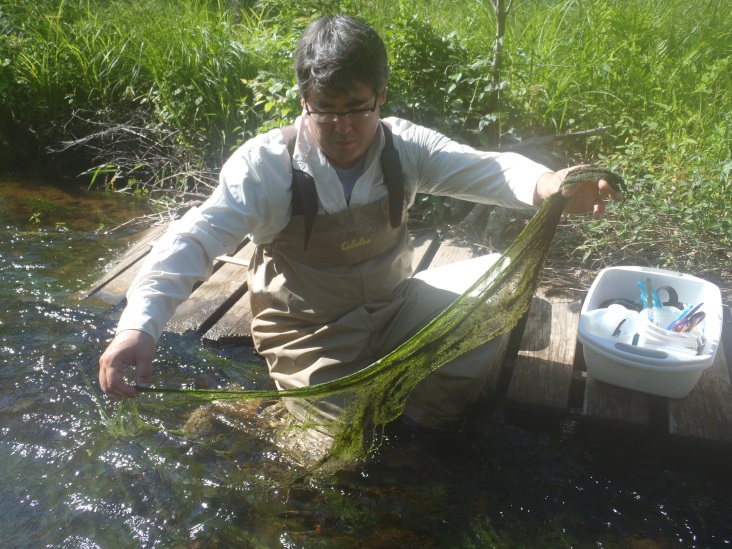Aquatic Life Impacts of Phosphorus
Research and Monitoring
Phosphorus is a nutrient that contributes to cultural eutrophication when added in excess to water bodies through human sources. Cultural eutrophication is a serious threat to water quality in Connecticut and is also one of the most pressing water quality issues facing the nation. Cultural eutrophication is described as human-caused acceleration of aquatic plant growth through excess nutrients, like phosphorus, in water bodies. It is a process which leads to a heightened acceleration of primary production or biomass increases within a water body. It causes harmful effects on water bodies, such as detrimental shifts in biological communities, fish kills, and reduction of dissolved oxygen and pH values. Sources of human-inputs of phosphorus include waste water treatment facilities, lawn fertilizers, storm water runoff and agriculture.

The CT DEEP Monitoring Group is engaged in several efforts to study the effects of phosphorus in water bodies. This page provides information on the monitoring efforts, results and analysis conducted by the Monitoring Program. These efforts include recommendations by the Connecticut Academy of Science and Engineering report ‘Methods to Measure Phosphorus and Make Future Projections’ developed as part of Public Act 12-155, An Act Concerning Phosphorus Reductions in State Waters.
CT DEEP has taken several steps to implement reductions in the most impacted streams. Information on the management of phosphorus in CT and Public Act 12-155 can be found on www.ct.gov/deep/phosphorus.
Continuous Dissolved Oxygen Project
In partnership with the United States Geological Survey (USGS) and the New England Interstate Water Pollution Control Commission (NEIWPCC), CT DEEP is collecting continuous dissolved oxygen data and evaluating the data for potential use in assessment of phosphorus effects in Connecticut streams on aquatic life. Preliminary analysis from data collected in 2015 and 2016 showed that daily dissolved oxygen flux (minimum-maximum for each day) may be a beneficial metric for assessment. Additional data is being collected to gain a better understanding of how dissolved oxygen varies as environmental conditions change (e.g. low flow vs high flow year). Data collected under this project is quality assured by USGS and posted to the USGS NWIS database online. To learn more visit the CT USGS Continuous Data Website.
Ecologically Relevant Phosphorus Concentrations
In partnership with the U.S. EPA Office of Research and Development, the DEEP Monitoring group, identified total phosphorus concentration thresholds and evaluated them for ecological relevance to diatom and algal biomass responses using a variety of methods.
Related Pages
- Phosphorus Reduction Strategy for Inland Non-Tidal Waters
- Ambient Diatom Community Monitoring Project
- River and Stream Water Quality Monitoring
- Water Monitoring Program Overview
For More Information Contact:
Mary BeckerWater Monitoring and Assessment Program
79 Elm Street, Hartford, CT 06106
(860) 424-3262
mary.becker@ct.gov
Content last updated May 24, 2022.

